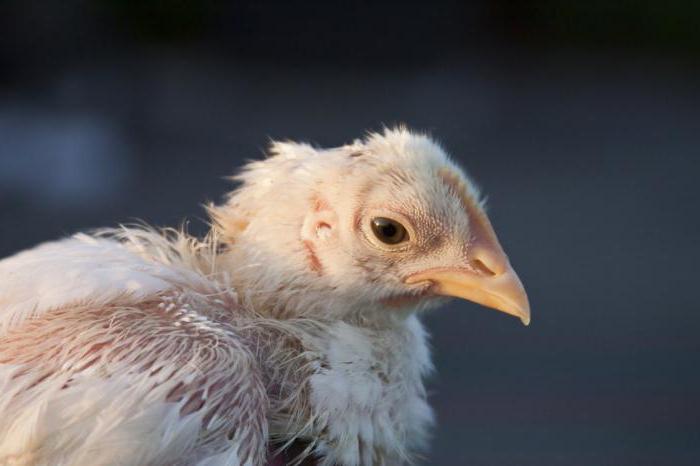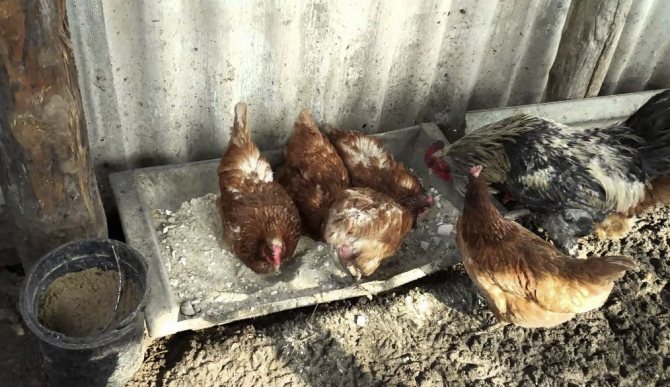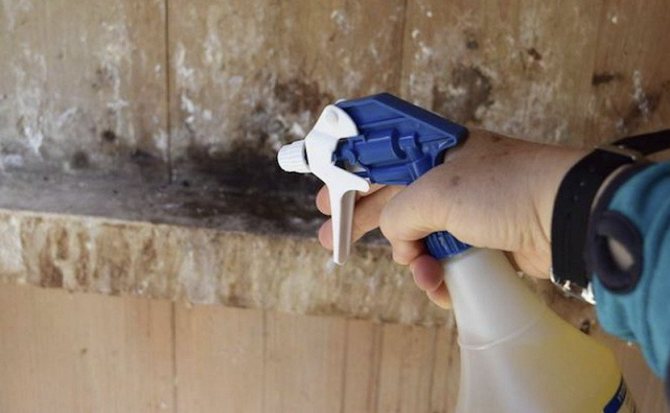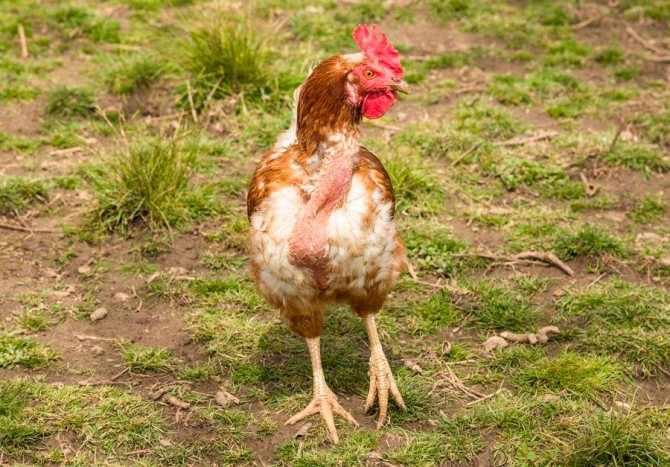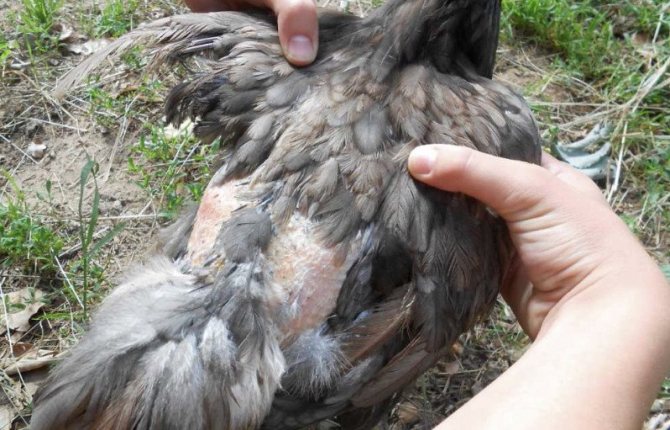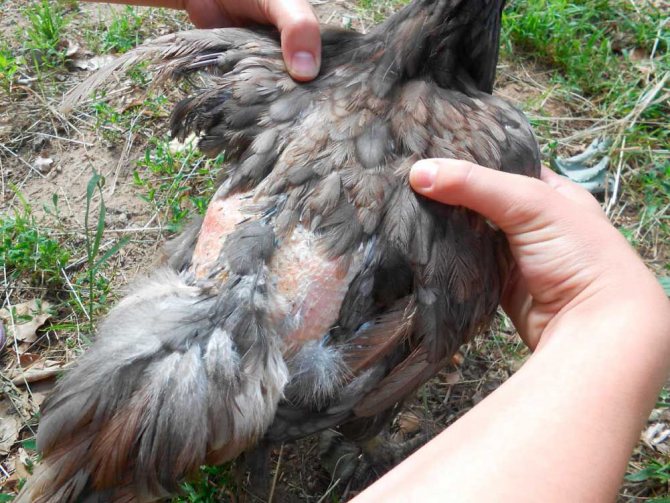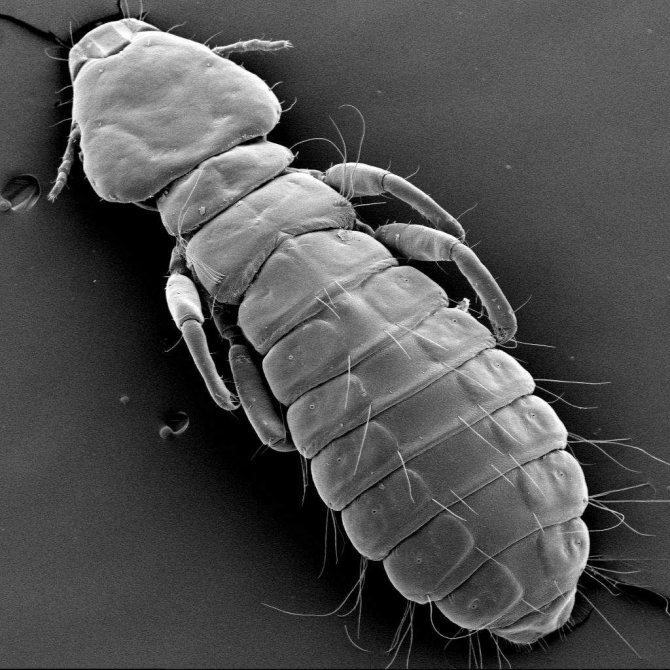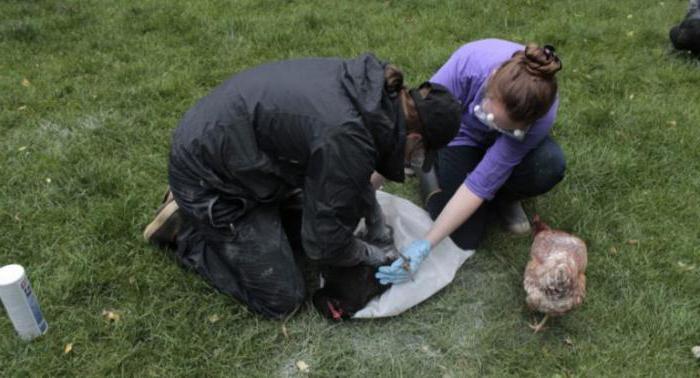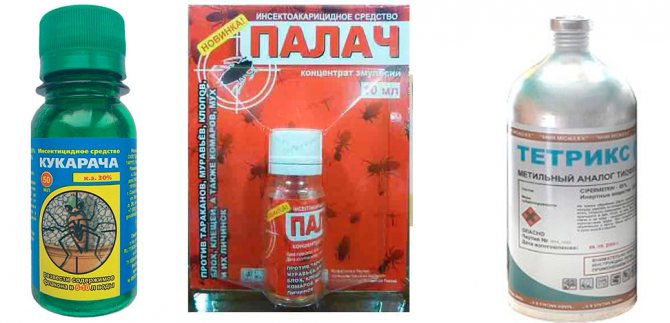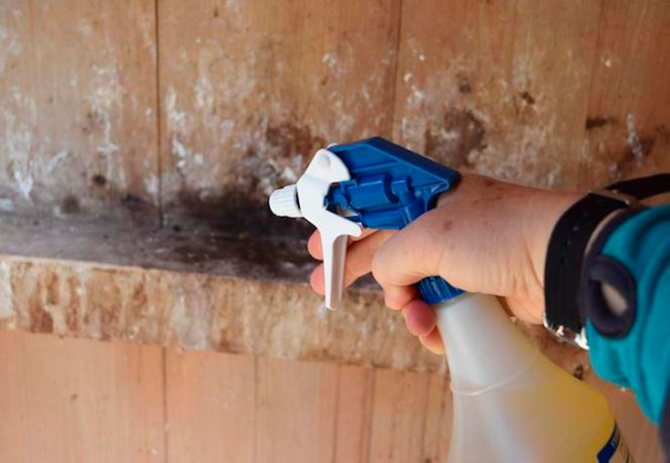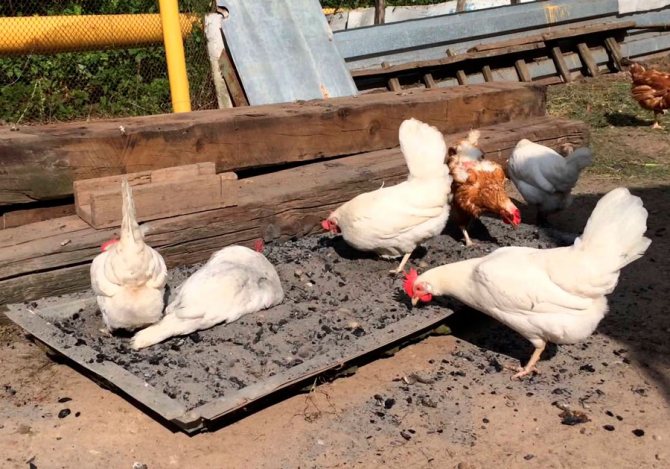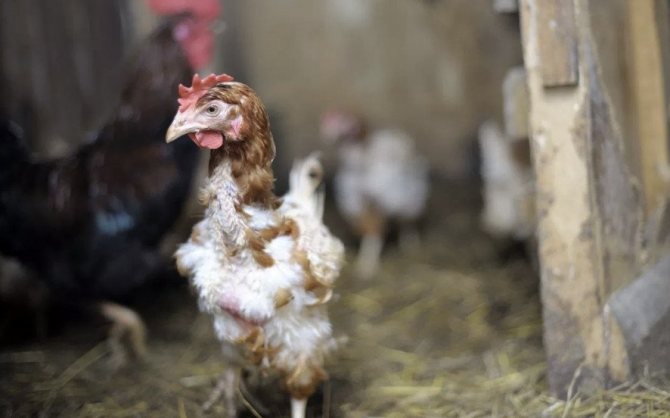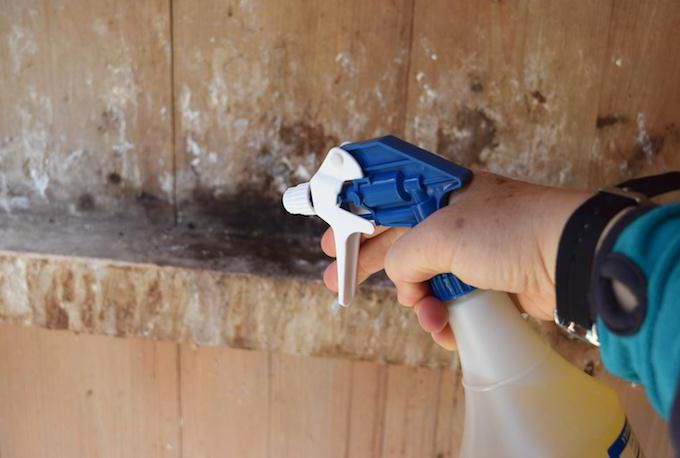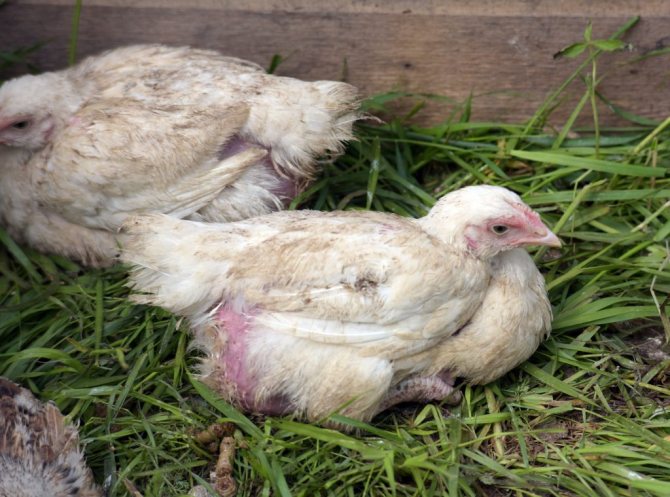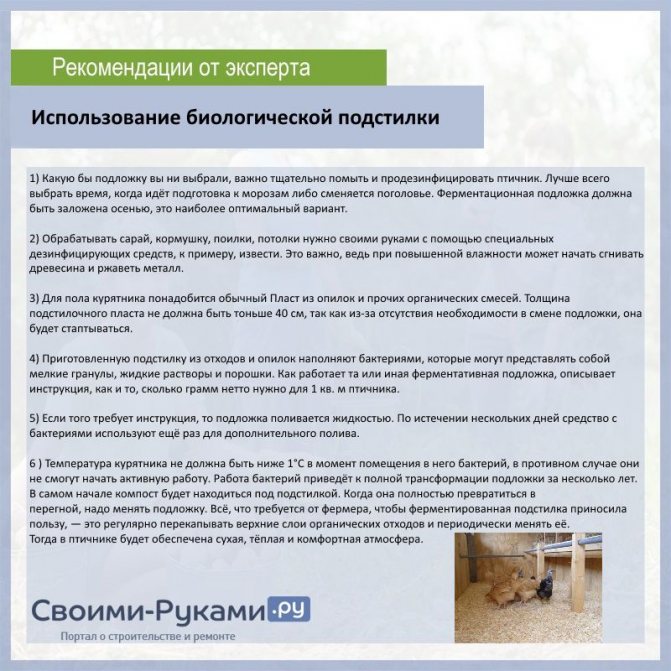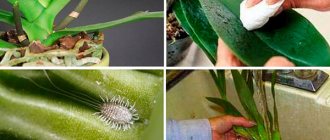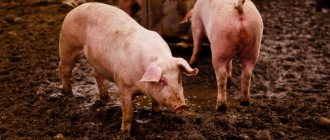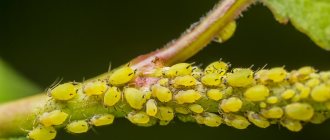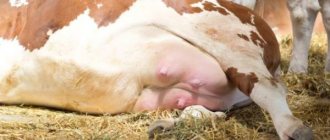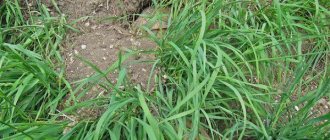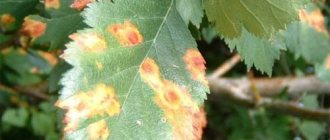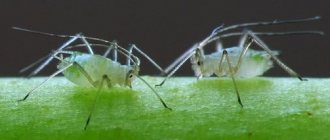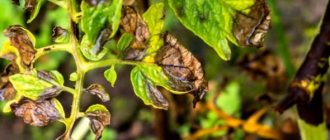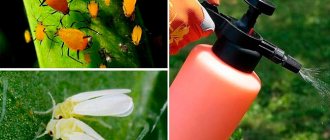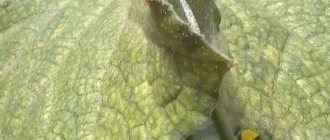Are the chickens behaving strangely? Do they constantly itch and pluck feathers without leaving a single feather on their body? Then you need to be careful about poultry. After all, this behavior indicates the first sign of the presence of an insect pest. They are also called peroed. This article will be devoted to this particular type of lice, as well as how to avoid their appearance and start treatment on time. Feathers are insects that cannot be seen with a human eye, because their length is two millimeters. Any poultry farmer, from beginner to experienced, will need knowledge about the parasitic diseases of their poultry, because he must determine the presence of the disease (preferably at earlier stages and provide appropriate assistance). Very often, domestic chickens have parasites that spread quickly and bring a lot of inconvenience to the chickens.
Harm and danger
Photo of what the pest looks like:
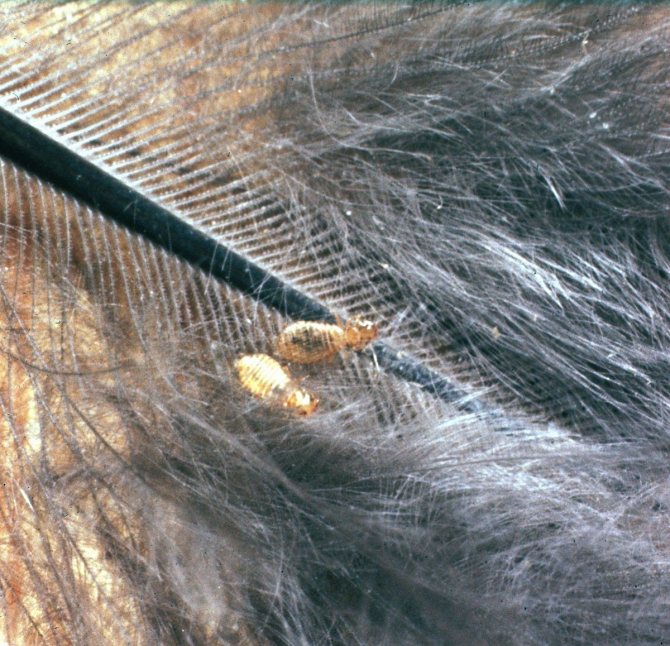
The most obvious harm that an insect can cause is to reduce the productivity of chickens. The ability to lay eggs falls by just over 10%.
Pests adversely affect the body of both adult and young birds.
Young animals gain weight very poorly, and puberty occurs later than the due date.
If a bird breeder keeps decorative species of chickens, then their aesthetic appearance is lost, since the feather eater damages the base of the feathers, they become dull and fall off.
Mallophagous disease causes itching, from which the bird scratches the skin to wounds, which can become infected.
The cycle of life of feather eaters
The insect's life cycle takes place on the body of its owner. It also reproduces there, laying eggs on feathers at the very skin. The emergence of new offspring occurs in 4-7 days, and one pair within 4 weeks is able to give life to 120 thousand individuals. The actual period of development of the parasite from egg to adult takes 3-4 weeks. It should be noted that the feather-eater can perfectly adapt to environmental conditions and successfully exist in the bedding of birds, feeders, and equipment. But if the bird dies, it will also cease to exist, because it is accustomed to a certain temperature regime and cannot live in another environment.
Infection routes
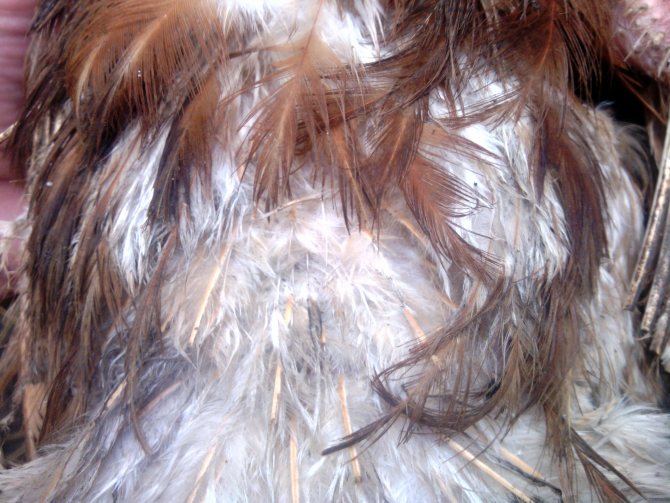

There are several known ways of infection:
- From an already sick chicken while taking dust baths.
- From wild birds that flew into the yard.
- The insect can be brought by the owner himself on his clothes or shoes from another pen where the infected chickens lived.
Knowing in advance about the specifics of the spread of feather-eating, it is possible to prevent massive chicken disease. This insect differs in that it has increased fertility; in less than a month, the female can lay a huge number of eggs.
Puff lice choose warm and humid places for breeding. Females place their eggs at the base of feathers or down, they are difficult to remove due to the dense sticky base covering the egg.
A larva appears from the laid eggs, which, after three molts, becomes a sexually mature individual. To do this, the pest needs to stay on the feathers for no more than three days.
Outside the body, the insect cannot exist for more than 4 days, therefore, the feather-eater spends almost all the time of its existence on the body of the chicken.
According to statistics, roosters clean their feathers less, so most often they have more insects.
The spread of the chewing lice is facilitated by untimely cleaning of the chicken coop and dampness.
Preventive actions
To keep your poultry house safe from parasites, you should take care of the conditions in which the birds are kept:
- free space, not crowded;
- regular washing of the entire premises, including perches, dishes;
- regular replacement of bedding;
- well thought-out ventilation system;
- heating in winter;
- regulation of humidity in the room.
In open-air cages, trays with ash and sand must be placed, and the courtyard itself is protected from visiting wild birds. Insect repellent herbs can be woven into the bed for birds (see the names above).
When buying a bird, carefully examine it for parasites or diseases before settling it with an existing flock. All feathered pets should be regularly examined.
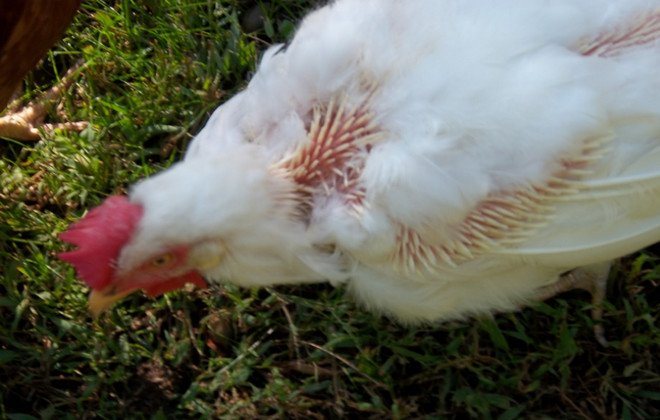

Did you know? Among the many phobias known today, there is another associated with poultry - Alectorophobia. People susceptible to this ailment are afraid not only of the chicken, but also of its images in magazines and books.
It should be remembered that the health of chickens depends primarily on the conditions of their maintenance and nutrition. The preventive measures taken will also reduce the risk of parasites and diseases.
Symptoms
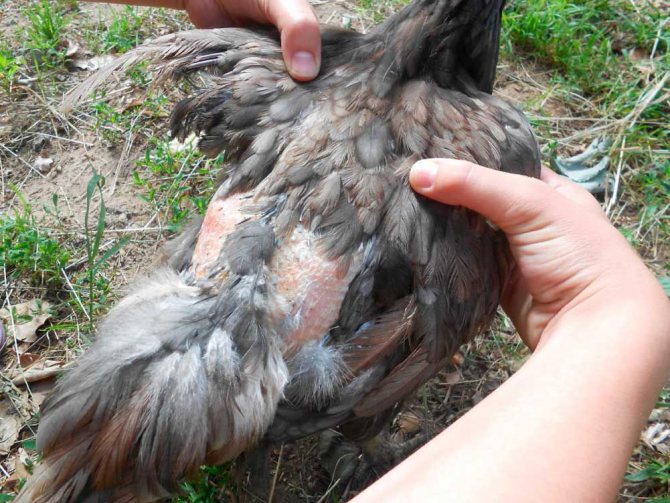

To prevent the disease from affecting all chickens, it is necessary to instantly respond to the slightest manifestation of symptoms:
- Poor chicken health. After infection, she becomes lethargic and sleepy due to excessive attempts to rid herself of the itching.
- Deterioration of the state of the feather cover of birds: feathers fade, fall out. You can see the micro-holes at their base.
- Constant cleaning of feathers and pulling out fluff. This condition suggests that the disease began not so long ago, and it is still possible to prevent the spread of feather eating.
- Decreased appetite and, accordingly, weights.
- Pronounced bald patches.
- Eye dischargewhich, when dried, turn into a crust.
- Wounds in places of bald spots.
- A sharp decrease in the number of eggs.
How to recognize mallophagosis?


It is possible to recognize the disease only after a thorough examination of the chicken. The first step is to pay attention to the bird's behavior.
If she is agitated or restless, it is best to examine the entire body and feathers.
If small holes are visible at the base of the feathers, and the trunk of the feather is half naked, then this is mallophagosis.
It is not difficult for experienced breeders to determine the disease. Newly minted farmers should seek the help of professionals.
They will be able to tell exactly what worries the chickens and determine the extent of the infection.
Symptoms of the appearance
By the way the bird behaves, it is possible to determine the presence of the parasite. The appearance of peroed will surely make itself felt by a number of signs that are strikingly different from other diseases:
- the bird is constantly scratching and striving to pull out feathers;
- baldness is observed in places, and holes form in place of the fallen feathers;
- plumage is damaged at the base;
- birds are very nervous, they constantly clean their plumage;
- the growth of young individuals slows down, adult chickens slowly gain weight, as they lose their appetite;
- chickens stop laying.
If you do not pay attention to the abnormal behavior of birds for a long time, this can lead to a decrease in their productivity. In addition, laying hens, pecking the skin, form wounds that fester over time.
Pus and inflammation in wounds are very dangerous. If untreated and delayed getting rid of parasites, this can lead to the death of the laying hen.
How to get rid of?
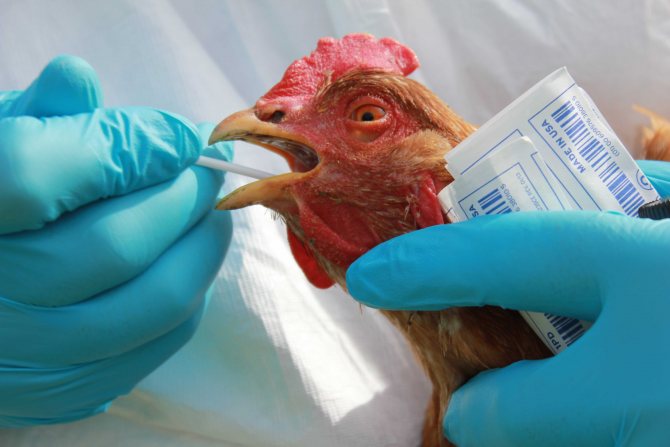

It is necessary to start the fight against the peroed immediately in order to prevent the global reproduction of parasites. There are several effective treatments.
These include chemicals and folk remedies. Chemical medicines are most often used in emergency situations when most chickens are affected.
If the cases of damage to birds are isolated, you can turn to folk methods: they are also highly effective if they are used correctly.
Drugs
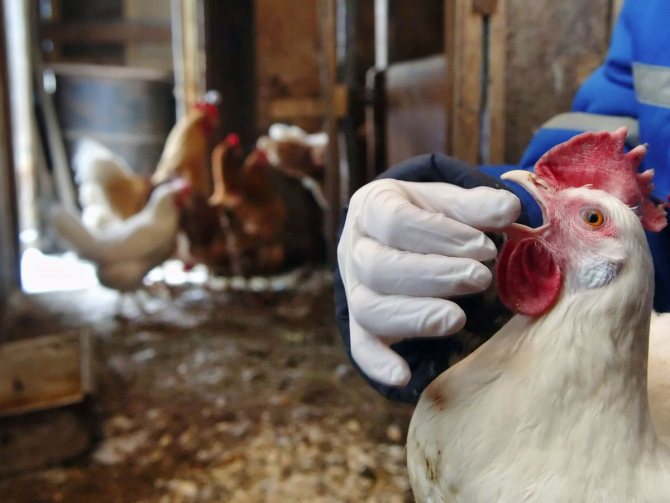

Birds affected by the puff louse will need to be removed from healthy individuals in order to prevent the development of an epidemic.
Further, sick chickens must be treated with special insecticides, which are sold in veterinary pharmacies.
These include:
- Frontline;
- Leopard;
- Beafar;
- Neostoazan;
- Stronghold;
- Celandine.
These funds are intended for removing lice and ticks in domestic animals (cats and dogs), but they are also successfully used in the treatment of malofagosis in chickens.
They should be purchased in the form of a chicken feather spray. Drops are recommended for isolated cases of infection.
If there are a lot of sick birds, veterinarians recommend using other forms of antiparasitic agents, which should be given special attention:
- Butox. Refers to universal antiparasitic agents. Available in liquid form, diluted with water and used to spray chicken feathers. The product can also be used to disinfect a chicken coop.
- Insectal. The drug is available in powder form and is intended for application to the body of a chicken. They need to powder the bird by rubbing it lightly into the base of the feathers.
- Arpalite. It is an aerosol that has the safest composition for birds, therefore it can be used even for treating young animals from 2 months old. Arpalit should be evenly sprayed on the plumage of the chicken.
- Nyuda. This is a spray for human lice, but it can also help get rid of feather eaters. The cost of the drug is quite high, but it has low toxicity, therefore it is excellent for the treatment of rare breeds or a small number of infected birds.
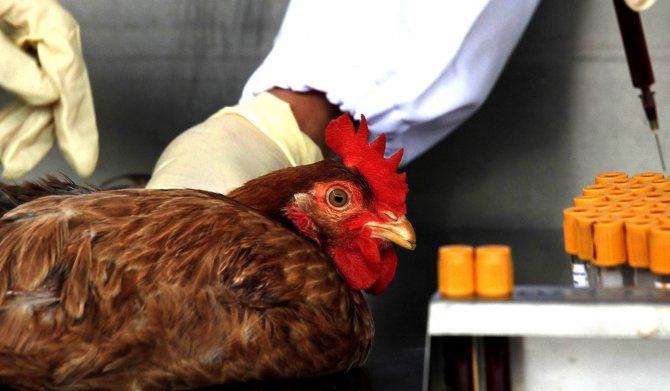

Regardless of the drug chosen, the following rules should be observed when processing poultry:
- Drops are applied to the feathers in the back area. It is advisable not to miss a single site, treating not only the infected areas, but the entire feather of the bird, so that the parasites do not have the opportunity to crawl to untreated areas and develop further.
- Spray evenly over the entire featherswith a focus on under-wing areas and bald areas. In this case, it is extremely important to spray the drug from a distance of 15-20 cm from the feathers. To prevent it from getting into the chicken's eyes, cover the head with a cloth. In any case, it must be remembered that insecticides in the form of a spray cannot be used on chickens under 3 months of age.
- Powder formulation it is also necessary to rub evenly into the feather of the bird, treating both the affected and healthy areas.
- Once the insecticide is applied to the feathers, the bird's beak should be tied for a while so that it cannot peck itself at the processing site. Adult parasites and larvae die within a few minutes, depending on the effectiveness of the drug used.
- All individuals should be processed. - both sick and healthy. In the future, this will prevent cross-infection and the spread of parasites.
Toxic compounds cause paralysis in adult feather eaters, but practically have no effect on the ovum. In this regard, the treatment should be repeated after 7-10 days in order to destroy the newly hatched parasites.
If this is not done, then in 14 days the chicken will be again infected with "lice". Some breeders recommend a second treatment in summer 9 days after the first, and in winter 12 days.
In any case, the interval between treatments must not be neglected, otherwise the birds may suffer and even die.
The exact procedure for processing chicken is determined by the instructions on the packaging of each drug. If you ignore these rules, birds can cause irreparable harm.
Disinfection


The house also needs careful handling. All wooden structures are treated with special chemical compounds, and iron structures should be burned with a blowtorch.
Insecticides for chemical treatment of chicken coops:
- Pyrethrum (diluted to a consistency of 10%);
- Karbofos (used in a 5% solution);
- Butox (for 4 liters of water there is 1 ml of the product).
Before disinfection of the chicken coop, the birds are evicted to another, clean room.
It needs to be pretreated to keep it sterile.
After processing, for full-fledged operation of the barn, they wait 48 hours.
Before the livestock is admitted, the litter must be completely replaced and the feeders must be cleaned.
Attention! Cannot be used for disinfection "Dichlorvos": the vapors are toxic and can kill weakened chickens.
How to treat with folk remedies?
Folk remedies are just as effective at home as chemicals.
The main advantage of such funds is that they have minimal toxicity, which allows them to be used even on young animals.
Sand-ash baths


Ash is an effective remedy in the fight against feathers and other parasites. It is necessary to take in equal proportions sand and furnace ash.
You can add "Chlorophos" to the mixture (2% of the total volume of the sand-ash mixture). Bathing in such baths, the chicken will get rid of the chewing lice.
Herbs
Chicken feathers, and many other parasites, do not tolerate the smells of various herbs, for example:
- tansy;
- chamomile;
- wild rosemary;
- juniper;
- wormwood;
- rosemary.
It is necessary to hang and lay out skeins of herbs in all corners of the chicken coop. The downy eater, having felt an unpleasant smell for him, will hasten to leave the room.
Attention! When breeding chickens, it is recommended to harvest herbs for the winter.
Iodine
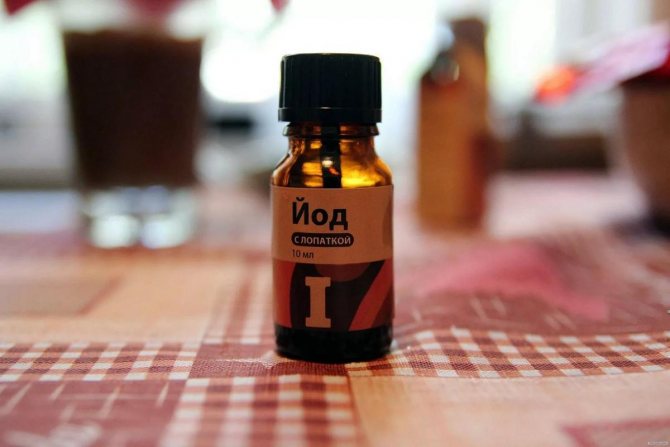

Before treatment with iodine, you need to separate the chickens: they should be placed in a separate room, healthy individuals at the time of treatment. Before jigging, carry out preventive treatment of both the premises and the birds. All affected areas are smeared with iodine.
The product will also help to avoid infection when scratching the skin. A medicine is a way not only to infect an adult parasite, but also to burn the eggs laid.
It is important not to overdo it, so as not to leave burns on the skin of the chicken.
Kerosene
You can fight feather-eating in chickens with kerosene. It is diluted with water and rubbed into the skin and feathers of the hens. Treatment is carried out every day until all insects have died.
If the lesion is large, it is recommended to mix kerosene with vinegar and water in a ratio of 1/4: 1: 2. This mixture will help to quickly kill the pest.
Symptoms, what a feather mite looks like and how to see it on a chicken
Parasites easily tolerate temperature fluctuations, so they live long enough. Oddly enough, when parasites do not find food for a long time, they still survive. For this reason, entire groups of pests find refuge on the body of birds. You may also be interested in information about how the Brama breed looks and what description exists can be seen in this material.
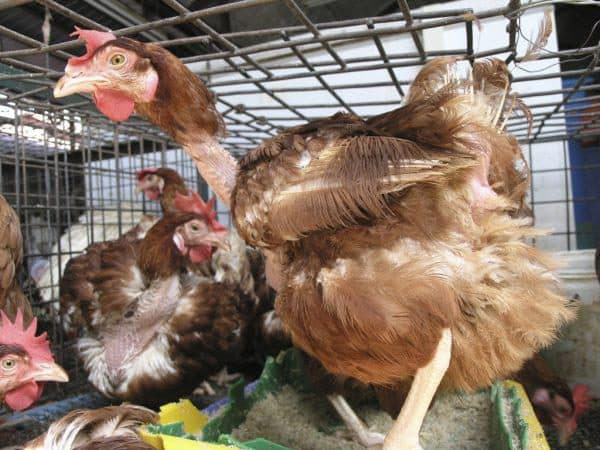

The threat of this parasite consists not only in the ugly appearance of a chicken, which remains without beautiful feathers, but in winter it can quickly freeze.
This is not the only breeding ground for parasites, because they can function on bedding, elements of the chicken coop, including any inventory items made of wood. Such a parasite can easily be transmitted to another animal by touching an infected individual or as a result of contact with any object where the pest lives. But how you can use tobacco dust from pests and how effective it is, is indicated here.
Thus, the appearance of a feather-eater brings only losses, because in addition, chickens can refuse food, they are depleted. In the absence of proper care, an infected chicken may soon die. In addition, the existence of the parasite affects the functional abilities of birds, because chickens stop laying eggs. But what can be done when birds fall to their feet and what diseases can contribute to this, this article will help to understand.
The external type of pest is very similar to common lice, but they bring much more difficulties.
The parasites have a light brown or yellowish body of a slightly compressed and elongated configuration. There are two pointed claws on the legs, with the help of which they cling to the feather or skin of chickens. Also, insects damage feathers for a short time, so it is so important not to miss the moment of identifying the parasite. You will also be interested to learn about how mycoplasmosis is treated.
The video shows a description of the problem and control measures:
Symptoms that indicate the presence of a parasite:
- defect of feather shafts at the root with holes;
- the infected bird becomes agitated, regularly tries to get under the feather with its beak;
- with prolonged infection with chewing lice, part of the plumage disappears in chickens, zones of the dermatological cover are exposed;
- diseased birds lose weight, and in addition, egg laying decreases.
Prevention measures
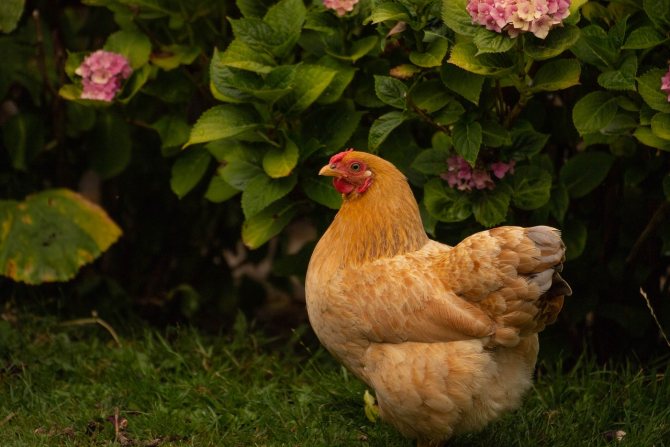

In order to prevent chickens from contracting malofagosis, the following recommendations must be followed:
- Change the litter cover, remove the droppings in a timely manner (at least three times a week).
- Every 30 days, do a complete disinfection of the entire chicken coop, including drinkers and feeders.
- Hang in the hen house and periodically change brooms of herbs, the smell of which is not tolerated by insects.
- Constantly observe the behavior of birds: this will help to timely recognize the symptoms of the disease.
- If the diagnosis is confirmed, immediately proceed with the examination and treatment of the entire population of birds.
- Avoid contact of chickens with wild birds.
- Do not enter the coop after contact with other birds.
Only the exact observance of preventive measures will help to get rid of the massive destruction of chickens by pereating.
Causes of the disease
Being struck by a feather eater does not mean that chickens are kept in unsanitary conditions. Although it is an ideal habitat for a small pest. Wild birds (pigeons, titmice, sparrows), which have free access to the chicken coop, can become the cause of infection. Also, the feather-eater is more often found in chickens, which are in closed rooms most of the time.
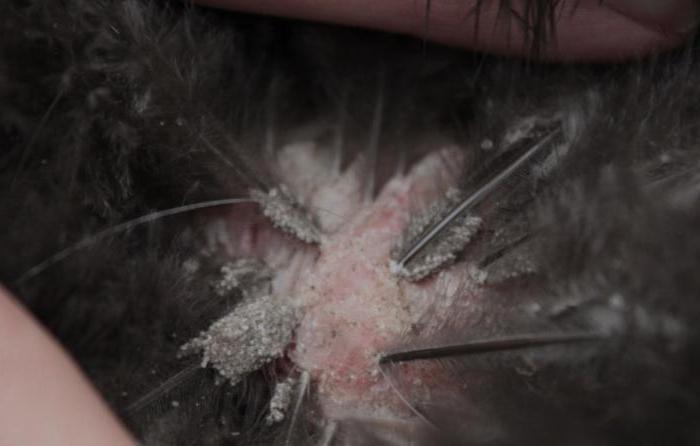

It is possible to determine mallophagosis in chickens (this is how the lesion by a feather eater is called) by the behavior of domestic birds: they constantly begin to peck at themselves and pull out feathers, trying to calm the itching caused by small parasites. In the process of such an ineffectual struggle, the chicken inflicts abrasions on itself, blood is released from them, which is the optimal environment for the life of "chicken lice" (this is how peroed in chickens is called in everyday life). Treatment of the bird is required when the slightest suspicion of signs of malofagosis appears.


